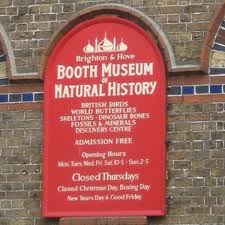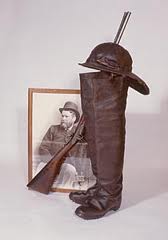Friends of Hastings Cemetery
Edward Thomas Booth, page 3

Rumours about Booth include his keeping a locomotive under steam for an entire week to enable him to leap into a hot train and travel to Scotland on receiving word from the ghillies, who were searching for examples of the few remaining White-
Also that he raised fledgling gannets in pens behind his house to enable him to kill them when they reached the level of plumage required for his display. Even that he became increasingly eccentric, even alcoholic, and fired his shotguns at the postmen on Dyke Road.

Shortly after his death his young widow donated his gun collection to the museum. She also commissioned a Portland stone pulpit inscribed to his memory to be erected at St Andrews Church, Portslade. When the church was decommissioned the stone was given to the Museum.
Booth wanted to bequeath his museum to the London Museum of Natural History; but they persuaded him otherwise. Brighton Corporation, as it was then called, became the beneficiary and there it has remained ever since.
In 1971 the Booth became a Museum of Natural History. It is now home to a staggering collection of 525,000 insects, 50,000 minerals and rocks, 30,000 plants and 5,000 microscopic slides. There are some spectacularly old specimens such as shells from the bottom of a 55 million year old Mediterranean lagoon, and dinosaur bones.
In 1998 the Booth Museum was one of the first regional museums in the country to be designated as having collections of national importance.